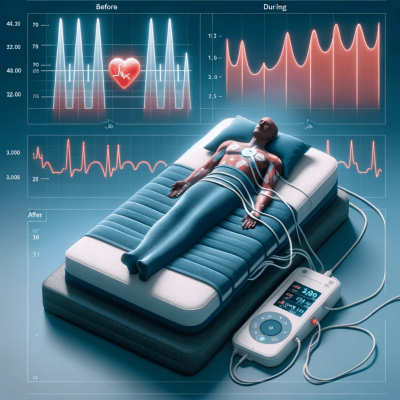Pathology is the study of the structure and function of the body’s organs and tissues. Pathologists use a variety of techniques to examine specimens, including microscopy, histology, immunohistochemistry, and molecular pathology. Clinical pathology is the application of pathology in the diagnosis and treatment of disease. A clinical pathologist is a medical doctor who specializes in the diagnosis and treatment of disease by the use of laboratory tests. It’s a very rewarding and lucrative job, but it also comes with demanding educational requirements. It takes many years to become a clinical pathologist, which is why it’s important that you’re aware of the educational steps you need to take in order to pursue this career so that you could make an informed decision.
Table of Contents
Toggle1. Overview
Becoming a clinical pathologist usually starts with a four-year undergraduate degree. After completing an undergraduate degree, you would then complete a four-year medical school program. There are various courses you’d need to take during medical school in order to specialize in pathology – phlebotomy courses, histology courses, medical microbiology courses, and medical immunology courses, among many others. After graduating from medical school, you would complete a three-year pathology residency. Finally, you would complete a one-year fellowship in clinical pathology. Altogether, it would take approximately 12 years to complete all the necessary education and training to become a clinical pathologist. This may seem like a lot, but it’s not that much given the context – most medical doctors spend at least 10 years in total to become specialists.
2. College
In order to pursue a career in pathology, you would need to have an undergraduate degree from an accredited college or university. While having a great college experience is important, and there’s always room for some fun, your courses will be demanding, so it’s important that you organize your time in a way that ensures you get enough sleep and still have time for studying and hanging out with friends. It’s important that you choose a major that would allow you to take the necessary courses for medical school after graduation. The most common majors for students who want to become clinical pathologists are in the biological sciences such as biology, biochemistry, and molecular biology. However, many students also major in chemistry or physics because these disciplines provide a strong foundation for medical school. You should also consider taking courses in:
- Anatomy
- Physiology
- Microbiology
- Biochemistry
- Genetics
All of these courses will provide you with a strong foundation for medical school and, ultimately, a career in pathology.
3. Medical School
After completing an undergraduate degree, the next step is to attend medical school. This is a four-year program during which you will take courses in basic sciences and clinical medicine. The focus of these courses is to teach you how to diagnose and treat disease. In order to specialize in pathology, you would need to complete courses in phlebotomy, histology, medical microbiology, and medical immunology. These courses will provide you with the basic knowledge necessary for a career in pathology. Even though you won’t have as many courses as you did in college, they will be more detailed and challenging. It’s important that you devote enough time to studying and practicing so that you can perform well on the medical school exams. After completing medical school, you would then complete a three-year pathology residency.
4. Pathology Residency
A pathology residency is a three-year program during which you would train to become a clinical pathologist. The focus of this training is to teach you the necessary skills and knowledge for the diagnosis and treatment of disease. You would learn how to examine specimens, including microscopy, histology, immunologist, and molecular methods. In addition, you would also learn how to use various laboratory techniques to diagnose disease. You would also learn about the different types of pathology, such as medical, anatomic, forensic, and pediatric pathology. While a lot of people have an idea on which specialization they want to pursue even before their residency, the practical experience you gain during your residency can help you determine which subspecialty is best suited to you. This residency is an essential component of your training to become a clinical pathologist.
5. Clinical Pathology Fellowship
The final step in your training to become a clinical pathologist is a one-year fellowship in clinical pathology. During this year, you would further specialize in one area of pathology. This could be in medical pathology, immunology, hematology, or another field of pathology. You would also learn about the different types of tests and procedures used to diagnose disease. For example, if you’re interested in hematology, you would learn about the different types of blood tests and how to interpret the results. On the other hand, if you’re interested in medical pathology, you would learn about the different types of tissue tests and how to interpret the results. This fellowship is an important part of your training, as it allows you to specialize in an area that interests you and gain more experience in using laboratory techniques to diagnose disease. After completing your fellowship, you would be a fully-trained clinical pathologist.
6. Board Certification
In order to practice pathology in the United States, you would need to be board certified by the American Board of Pathology (ABP). This is a rigorous process that involves passing a series of exams. The first step is to complete the Pathology Basic Science Examination, which covers basic science topics such as anatomy, physiology, and histology. The next step is to complete the Pathology Clinical Science Examination, which covers clinical topics such as diagnosis and treatment. Finally, you would need to complete the Pathology Oral Examination, which is an oral examination that covers all aspects of pathology. Once you have passed all three exams, you would be board certified by the ABP. Depending on which schools you previously went to – and where they were located, this may or may not be a separate step.
7. Additional Requirements
Finally, it’s important to know that even after becoming a practicing clinical pathologist, you would likely need to continue taking courses to stay up-to-date on the latest advances in pathology. This could include attending conferences or taking online courses. In some places, there’s a formal requirement to attend at least a certain number of continuing education courses every year. And more often than not, the courses need to be approved by the ABP. Depending on where you’d work as a clinical pathologist, publishing your research in medical journals may also be a requirement. The formal requirements are there to ensure that you have the most up-to-date information and stay current in your field.

So, what’s it like to be a clinical pathologist? It’s a very rewarding career, but it also has demanding educational requirements. Many people find that the road to becoming a pathologist is worth it when they see how meaningful pathology is both on a professional and on a personal level.








